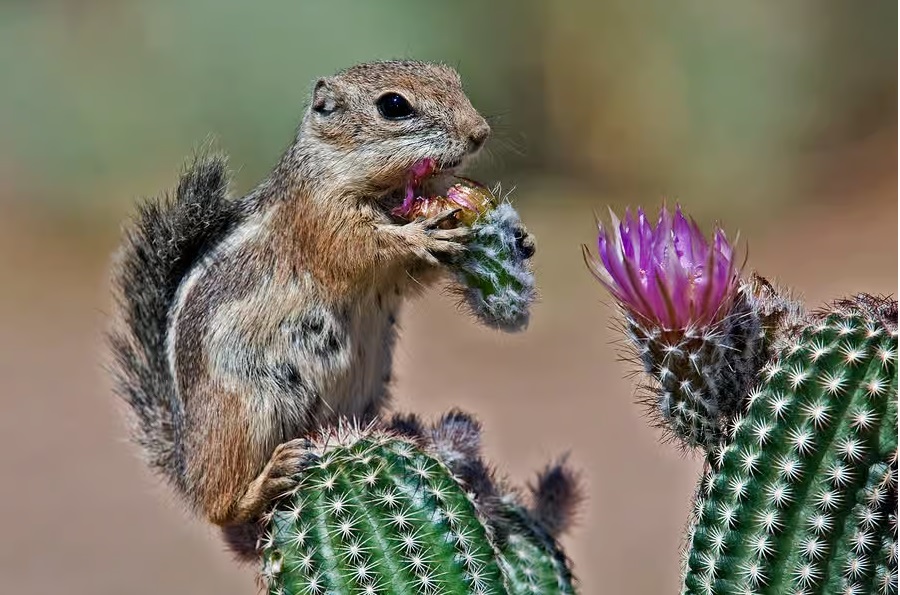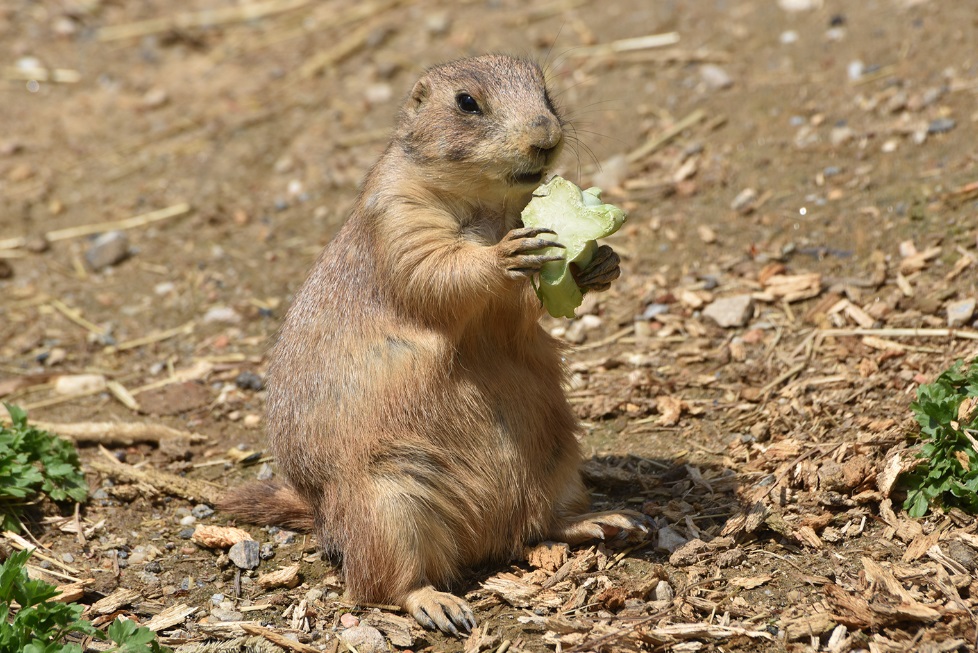Not Just For Camels: What Animal Eats a Cactus Plant
What animal eats a cactus plant? You probably associate cacti with deserts and camels, but did you know that these spiny succulents provide food and shelter for many other animals you’d never expect?
Cacti are a crucial source of nutrition and hydration in arid landscapes around the world. Their pads and fruits have adapted to be eaten, with sweet pulp and tiny seeds, attracting birds, reptiles, rodents, and more.
Next time you see a cactus, imagine the bustling community of cactus plant consumers relying on these versatile plants. Javelinas, coyotes, and bobcats will gnaw on pads. Woodpeckers and flickers drill into cacti to reach insects and larvae.

Prickly pear: a prized food source in the desert
Prickly pears are more than just camel food. These hardy cacti provide sustenance for a variety of desert animals.
- Gila woodpeckers and cactus wrens
These birds peck holes into prickly pear pads, then lap up the sweet pulp and juices inside. They also build their nests in cholla cacti, using the spines for added protection.
- Desert mammals
Everything from coyotes and bobcats to rabbits and ground squirrels will munch on prickly pear fruit and pads when available. The thick skin of ground squirrels protects these animals that eat cactus from the spines, and the moisture and nutrients help them survive harsh conditions. These animals live underneath the cactus and other desert shrubs.

- Native Americans
For centuries, prickly pears have been an important food source for tribes like the Pima, Papago, and Seri. Both the pads (called nopales) and the pear-shaped fruit (tunas) are edible.
As you can see, prickly pears play a vital role in the desert ecosystem and have a long history of human use. So next time you see one of these spiny cacti, remember all the creatures that depend on them—not just camels!
By providing food and shelter, the prickly pear cactus plant helps make the challenging desert environment more hospitable for life.
- Jumping cholla
This cactus gets its name from the ease with which its stem segments detach and cling to passersby. However, it’s not just unlucky hikers that interact with this cactus. Surprisingly, the jumping cholla provides food and shelter for a variety of desert animals.
- Woodpeckers and sapsuckers drill holes in the cactus to reach the moisture and nutrients inside.
- Desert bighorn sheep and mule deer browse on fallen cholla joints and flowers. The moisture stored inside the cactus pad provides much-needed water for the animals.
- Desert tortoises also consume cholla pads and flowers, their tough shells and mouths allowing them to navigate the spines.

Tiny insects that call cacti home
The cactus longhorn beetle bores into cacti, laying its eggs inside the plant. The larvae feed on the inner tissues, creating a network of tunnels.
Though destructive, the beetles usually don’t kill their host cactus. These beetles are found throughout North and South America, wherever cacti grow.
Cactus flies, also known as cactus dodgers, live and breed in rotting cacti. The females lay their eggs in cracks or holes in the cactus, and the larvae (maggots) feed on the decaying inner tissues.
The adult flies feed on nectar and pollen from the cactus flowers. These flies are essential pollinators for many cacti species.

Rodents who gnaw on cactus flesh
You probably don’t associate cacti with being a food source for wildlife, but several rodents gnaw on cactus flesh.
These spiny snacks provide moisture and nutrients for animals well-adapted to desert regions.
Pack rats
Pack rats, also known as woodrats, build their nests out of cactus ribs and pads. They gnaw off chunks of cacti, including saguaro, and cholla, to construct their dwellings.
Pack rats also often eat cacti fruits, flesh, and seeds, especially when other food sources are scarce.
Kangaroo rats
Kangaroo rats get much of their water needs from the cacti they consume, particularly prickly pear pads.
These nocturnal rodents carefully gnaw around the spines and gobble up the moisture-filled flesh and seeds inside.

Prairie dogs
You probably don’t associate cacti with prairie dogs, but these social little rodents rely on certain cacti species as a food source.
Prickly pear cactus pads, known as nopales, make up a large portion of a prairie dog’s diet.
Prairie dogs live in underground burrows in large colonies across the western united states. They forage above ground for grasses, roots, seeds, and cacti.
Prickly pear cactus pads are a staple in their diet, especially in the fall when other plants become scarce.
The pads, called nopales or paddles, are modified stems of the cactus. Though covered in spines, the fleshy pads are edible for prairie dogs.
They deftly maneuver around the sharp spines to get to the moisture-filled padding.
Prairie dogs have also developed immunity to the tiny glochids, or hair-like spines, that can detach from the pads and cause skin irritation.

Galapagos land iguana
The Galapagos land iguana is another unusual cactus consumer. These large lizards, found only on the Galapagos islands, rely heavily on prickly pear cactus pads and fruits.
Their diet consists of up to 90% Galapagos land iguanas cacti, depending on the season.
- Their jaws and teeth are specially adapted to feeding on such thorny fare.
- The iguanas also enjoy eating cacti flowers and small insects when available.
- During the dry season when other food sources are scarce, the iguanas depend almost exclusively on eating cacti for sustenance.

Can a Desert pocket mouse eat cactus?
The desert pocket mouse may be tiny, but it has a big appetite for cactus. These nocturnal rodents are well adapted to desert life in the American southwest and northern Mexico.
They have special adaptations that allow these animals eat cacti. Its agile body and strong hind legs give it the dexterity to navigate cacti pads while avoiding sharp spines.
Its keen senses of smell and hearing help in locating ripe cactus fruits in the dark.

Larger mammals that feast on cacti
Larger mammals that eat cacti may surprise you. Beyond desert animals that eat cacti like coyotes, bobcats, and javelinas, even bears find certain cacti fruits and pads irresistible.
- Bears
Black bears, grizzly bears, and polar bears eat prickly pear cactus pads, called nopales. The pads are a good source of water and nutrients for bears.
Black bears also enjoy the sweet fruit, called tunas, of the prickly pear cactus. Bears will scrape off the spines with their teeth or paws before eating desert plants.
- Deer
Mule deer and white-tailed deer also eat cacti pads and fruit. The deer use their agile lips and tongues to scrape off the spines before munching on the juicy pads and tunas.

- Tortoises
Desert tortoises and other animals eat cactus, especially prickly pear cacti seedlings, cholla, and barrel cactus. Using their tough beaks and jaws, tortoises scrape off spines and chew through the hard pads and stems.
Certain cacti make up 50-95% of a desert tortoise’s diet. Tortoises also eat prickly pear cacti flowers and fruit when available.
- Javelinas
Collared peccaries, also known as javelinas, rely heavily on prickly pear cacti. Using their hard snouts, javelinas plow through patches of prickly pear cacti, consuming pads, stems, flowers, and fruit.
A single javelina can eat up to 4.5 kg of prickly pear cactus plants in one day. For these desert plants enjoyers, cacti are a staple food source and mainstay of their diet.
As you can see, more than just camels gain sustenance from cacti.
Larger mammals have developed ways to overcome the challenges of cactus spines and consume prickly pear cacti as a critical source of food and moisture.

Desert bird species: birds who nest in cactus plants
Birds are perhaps some of the most surprising animals that eat cactus.
Several species have adapted to nesting in cacti, using their thorny frames for protection from predators.
- Cactus wrens
Cactus wrens are medium-sized songbirds found in the southwestern united states and northern Mexico and the Sonoran desert.
They build large nests in prickly pear cacti or saguaro cactus, organizing the spines into a circular wall around the nesting cavity.
They also feed on cacti and insects. The spines act as a defensive barrier, deterring snakes, lizards, and other animals from raiding their nest.
They collect insects and other invertebrates impaled on the spines, as well as consume cacti seeds and fruits.

- Verdins
Verdins are tiny yellow-bellied birds found in the American southwest.
Verdins feed on insects, spiders, and cactus nectar. Their cactus homes provide protection and food, as well as sturdy spines for anchoring their intricately woven nests.
Verdins may not seem like the most likely cactus tenants, but their adaptation to nesting in these thorny cacti plants has allowed them to thrive in harsh desert climates.
Cacti are more than just camels’ fodder. For some desert birds, these prickly cacti plants offer the perfect protected shelter to raise their young, as well as a ready source of food.

Conclusion
So there you have it, a whole host of critters you probably never imagined munching on prickly pear or saguaro cactus. You might just spot a woodpecker drilling for water, a coyote crunching pads, or a bobcat batting around a cactus mouse.
Now you know what animal eats a cactus. Cacti aren’t just for camels after all. They’re a vital source of food, water, and shelter for so many desert dwellers.
Even if they don’t seem the most appetizing to you, for many animals those spiny succulents are utterly irresistible.

FAQ
What animal eats cactus?
Desert animals rely on cactus to survive, but many animals eat cactus simply because they like the way it tastes. In addition to cactuses, javelina hares, rabbits, and sand-colored tortoises eat cacti.
Deer and other animals eat cactus, and wild pigs graze on cactus by destroying its stem with strong horns as well. Squirrels and gophers eat cacti fruits to provide a source of food and water.
What is eating my cactus?
Although most of the cacti and succulent plants grown in houseplant gardens suffer from bacteria and fungal diseases caused by overwatering, there is still an occasional pest.
Some common parasites include scale bugs – food bugs – root bugs. Some lesser commonly found bugs include spiders and fungi gnats.
Do squirrels eat cactus plants?
Among many animals, cactuses are delicious including rats, snout, elk, and squirrels. Several animals eat cacti, especially the prickly cactus that seems to discourage rodents, but the thirsty critters have braved the mighty spine to find sour nectar under their spines, especially during prolonged droughts.
What animals eat Saguaro cactus?
Many animals eat Saguaro cactus – bats, wasps, beets, and butterflies drink nectar from cactus flowers. Small animals like pack rats and pocket mice can eat cactus.

Greetings, dear succulent lovers! I’m Jennifer West and I’m happy to share with you practical tips and guides on growing and caring for succulents, as well as all the magical facts about these unique plants. Grateful to have you on this green journey with me! Check out more about our team here.





![Succulent Death Bloom [3 Most Common Monocarpic Plants] Succulent Death Bloom](https://succulentcarehub.com/wp-content/uploads/2024/05/Orange-Coral-Feminine-Digital-Business-Facebook-Cover-14-min-768x473.png)

